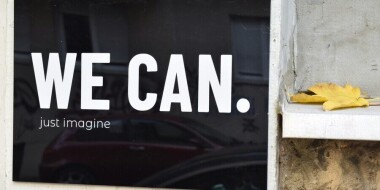The recently outbroken pandemic is a burning issue in the world, and it is hard to avoid it in conversations, no matter who you are talking to, a friend, a relative, a colleague or a student. Here are some ideas for the beginning of the lesson that might help to discuss this issue in a constructive way and enable you and your students to benefit from this discussion, both intellectually and psychologically.
- What’s in a name? (Intermediate+) The virus has changed three names already, and there are reasons for it that might be of interest.
Ask your students if they know, what the current name of the virus is and what names it has already changed. After you tell the answers: “the Wohan (corona)virus”, “coronavirus” and “covid-19”, ask your audience to speculate, what the reasons for the name changes might be.
Wohan toponym was taken out for two reasons, the first one being the really fast spread of the virus far beyond the Asian borders. The other reason was to avoid stigmatisation of the place and people. It had long been traditional to name the highly contagious diseases by the name of the area it first appeared in as an attempt to make people stay away from the place. In case of an epidemic / pandemic this information loses its relevance quite quickly, but it does spoil the reputation of the place for decades ahead. “Consequences can include economic distress, as tourists withdraw, investment cools down and solidarities between people weaken”. May you or you student(s) get interested in details, you can refer to the informative gist of epidemics names in history.
The name “coronavirus” didn’t last either. The World Health Organisation has taken the decision to specify it, as “coronavirus” is a generic name for a family of viruses affecting the respiratory tract. The acronym “covid-19” (coronavirus disease + the year of 2019) is meant to label this very virus.
This act has caused questions, some of them are posed in the article “WHO is renaming the coronavirus to covid-19 to avoid confusion”. The author doubts whether the decision is rational, considering the paperwork to follow, as well as the need to change the existing signs and posters. This article also exposes a language issue for another warm up activity.
- Acronym or initialism? (Intermediate+)
The name of covid-19 is an example of an acronym, it’s an abbreviation that can be pronounced as one word, similar to NATO, OPEC, AIDS, asap. Not all abbreviations can be pronounced this way, some are to be said letter by letter, like ATM, the USA, BBC. These are known as initialisms.
The following meme has been inspired by the WHO decision to rename the virus.

This joke only makes sense when you read it, as WHO is an initialism, and as soon as you pronounce it, it stops being identical with the interrogative pronoun “who”.
You may tell the students about the recent renaming of the novel virus by the WHO, show the meme and use it as a trigger to speak about acronyms and initialisms. Ask the students to classify more abbreviations into acronyms and initialisms. Is covid-19 an acronym or an initialism?
- Memes as a way to raise awareness (Pre-Intermediate+)
Is it even appropriate to joke about pandemics? Depends to a large degree on the quality of humour and the intention. If you do not feel comfortable with the idea of memes and jokes about this sensitive issue, there is a sound collection of pros and here is the one reason that I personally find inspiring: “coronavirus memes can be an accessible entry point for actual learning, a way to educate the public without, you know, sending them scrambling to the grocery store to hoard toilet paper.”
Indeed, memes and jokes are a way to raise the topic without the danger of sliding into direct instructions or moralising. Preaching and dictating might seem efficient, but only in theory, in reality they make kids bored, teens — resistant, adults — resentful. Memes might enable you to introduce a touchy topic with less risk of misunderstanding or unproductive disputes.
- The following memes are all about the social distancing, self-quarantine and lockdowns that have been recently officially imposed by the governments in a number of European countries and the USA as measures to prevent the virus spread.






Show the pictures and elicit the reasons for why there are no people in the pictures labelled “covid-19”. This activity will trigger introducing the notions of social distancing, self-quarantine, lockdown. You can talk about #stayathome movement (an ironic combination of words, indeed) and stayathome flashmobs.
- You may then proceed with the infographics explaining the importance of social distancing:

With Intermediate+ students describing this infographic is also the way to practice the numerals, including decimals, and structures for statistics, including those with prepositions “by” and “to”:
e.g. Reducing the social contact BY 50 % results in infecting two times fewer people in 5 days and 27 times fewer people in 30 days.
Reducing the social contact BY 75 % you decrease the number of people possibly infected people TO 0.625 in 5 days and TO 2.5 people in 30 days.
- If your students are empathetic enough to understand self-irony, this picture can bring out the speculation on how people may feel in the face of danger and try to bring it down to commodity issues, comparing getting a virus with getting the latest iPhone model:

Another iPhone joke is very popular now in the countries under quarantine: “The new iPhone will be released well before I will” / “IPhone 12 will be released soon, and you won’t”.
There is an allusion to confinement in these jokes, as a lot of people, no matter how conscientious and responsible they are, can’t take the freedom deprivation easy and just embrace having no choice of where and how to spend time. However, humour has long been a way to get over hardships without feeling miserable or frustrated.
- Hanging out while staying in (Intermediate+, 21+)
Introduce the novel social phenomenon: virtual cocktail parties, happy hours and get-togethers via online communication platforms, such as Zoom, Facebook* Live and Google Hangouts. People arrange conference calls or create events on the online platforms, to which they invite their friends, relatives, or anyone interested. They spend time the way they would do in a bar or café, the only difference is that they don’t leave homes. Not seldom such events are arranged by bar owners and bartenders. This is the way for people to socialize and stay connected to those they know, as well as to explore new social contacts.
Show your students some pictures from the article that tells about this trend, with people clinking glasses on screens, and discuss the questions:
- Would you try virtual socialising with family and friends if you had no other way to meet them?
- How does a glass of wine / a cup of tea that you all are having while talking make this experience different from usual audio/video communication?
- What do you think of virtual happy hours / virtual parties that feature hanging out with unfamiliar people over a glass of wine?
5. Stay tuned and wash your hands (Elementary+)
Students of any age group can benefit from this activity. It is offered by the site whose name speaks for itself. Wash Your Lyrics is an infographics generator that will create a poster with the instruction on how to wash hands properly to your favourite song. This is my poster, I am old-school and wash hands to Aerosmith songs.

Singing / humming the song while washing hands will ensure that you do wash your hands thoroughly and do the timing in a pleasant way. If your favourite song is not in their database, there is an option to upload any text and the poster will be generated to fit it into the hand-washing routine. You can upload a poem, a piece of prose, a chant, whatever you would enjoy repeating in English 20 times a day (yes, this is how often we are recommended to wash hands). So makes sense to change posters from time to time ☺
Ask you offline students to explore the site and download the poster, so that you couold practice the text in class, or help your online student figure out the problem parts of their pet lyrics / texts before they add them up to their safety routines.














 Олеся Яресько
Олеся Яресько 
 Маргарита Аветисян
Маргарита Аветисян 

 Мария Цедрик
Мария Цедрик 
 Диляра Биктагирова
Диляра Биктагирова 
Thanks for spending time on reading the article and making the comment. I am aware of the detail you provide, but the accuracy of the name is not the point in this article. The household names for the current plague are «Corona Virus» and «COVID-19», anything more specific than that would be irrelevant in an average classroom, unless it is a class on biology. Or journalism.
Actually, this article makes some incorrect assumptions. Many viruses are a «Corona Virus», including Influenza and S.A.R.S. «Covid-19» is the name of the disease that this current «Corona Virus» gives you. This specific virus, is named «S.A.R.S Cov-2». This is always been the case. Media outlets are just lazy at details and deep analysis.